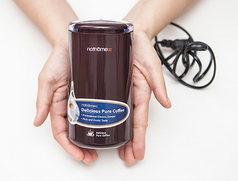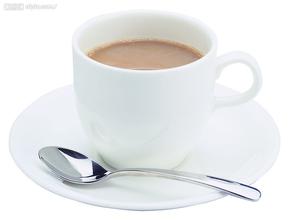A brief History of Coffee Machine semi-automatic Coffee Machine traditional Italian coffee machine
Coffee machine people apply electronic technology to the coffee machine to realize the automatic control of the whole process of brewing coffee, such as grinding, pressing, loading, brewing, removing residue and so on, creating the coffee machine.
Before the second World War, although it avoided the disadvantage of using steam as a source of pressure to burn the coffee powder easily, because the pressure is to transmit the strength of the arm through the piston to push the hot water, not only a strong arm is needed, and the pressure is not easy to stabilize.
World War II stopped Cremonesi and Gaggia from improving the coffee machine. When Cremonesi died during the war, he left the patent for the coffee maker to his widow, Rosetta Scorza. We don't know whether Rosetta Scorza told Gaggia about the design patent, or whether Gaggia's design came entirely from its own invention. In 1947, Gaggia improved the original piston principle, and the force of the piston was controlled by a spring. As long as the operator presses the rod, the spring will be compressed and hot water will be injected into the space between the piston and the coffee powder. When the spring on the piston expands, press the piston down, the hot water will flow to the coffee place, and the rod will return to its original position.
In 1948, Gaggia applied this principle to complete his coffee machine, because he pushed hot water into a denser coffee powder and the pressure was greater and more stable than ever before, resulting in a layer of Krima on the coffee, which appeared for the first time in history. Since then, Klima has become the symbol of Italian coffee, and like Turkish coffee in the past, Klima is also the standard to judge whether coffee is good or bad. Gaggia's coffee machine also makes the brewing process more dramatic, with the arm operating the crossbar and the crossbar slowly returning to its original position, which has become a routine at many Espresso bars.
The household La Pavoni still maintains the tradition of Signore Cremonesi and does not add a spring to the piston, but some coffee machines on the market that are very similar to La Pavoni, such as the Elektra (Family series), add springs to make the pressure stronger and more stable. The method of discrimination is very simple, as long as you gently press the crossbar to see if there is any reaction force of the spring.
Next, the editor will focus on introducing the semi-automatic coffee machine.
Semi-automatic coffee machine, commonly known as handle machine, is a traditional Italian coffee machine. This kind of machine grinds, presses, loads, brews and removes the residue manually according to manual operation. These machines include small household machines with single faucets, large commercial machines with double faucets and three faucets, etc., and the newer machines are also equipped with electronic water control, which can accurately and automatically control the amount of coffee brewing.
This kind of machine is mainly produced in Italy and is very popular in Italy. Its main features are: simple machine structure, reliable work, easy maintenance, according to the correct method of use can produce high-quality Italian coffee. The drawback of this machine is also that operators have to be strictly trained to make high-quality coffee with this machine, and good baristas can provide customers with customized coffee.
But if you can make a delicious cup of coffee by hand, it is indeed a kind of spiritual enjoyment.

Important Notice :
前街咖啡 FrontStreet Coffee has moved to new addredd:
FrontStreet Coffee Address: 315,Donghua East Road,GuangZhou
Tel:020 38364473
- Prev

Classic coffee roaster: Nordic Omer nathome electric coffee grinder
Now all kinds of health care has occupied our life, everyone attaches great importance to health this problem! What bean powder, drinking food, you have to do it yourself to feel at ease! Nordic Omer highlights the latest technology ~ electric bean grinder is simply a multi-purpose dry goods machine, so that all kinds of grains, coffee and cooking ingredients can be turned into powder and can be eaten healthily. Its compact fuselage, press
- Next

Common coffee cup capacity coffee cup etiquette must be known
Most people have drunk coffee, but few people know how to drink coffee and how to use coffee cups. Some people drink coffee just to refresh themselves, while others even drink coffee to quench their thirst. Tea has tea ceremony, coffee drinking also has coffee etiquette, busy work leisure, a cup of coffee and a newspaper, just imagine how comfortable it is. The coffee cup we usually use is
Related
- What is the Philharmonic pressure? How to use Philharmonic pressure to make delicious coffee
- Why does a hand grinder have more fine powder than an electric grinder?
- In addition to the hot mom, what is the difference between the versions of EK43 | ditting and Mahdi ek43?
- What kind of equipment do you need to make coffee by hand? Introduction to novice starter cooking equipment tools
- Espresso needs to be ground how thick and thin scale entry Italian Coffee Machine Bean Grinder investigation and Grinding course
- How much does it cost to open a small private cafe? How much does it cost to learn coffee? How to operate it?
- The difference between the flavor characteristics of hand-brewed coffee and coffee maker is hand-brewed coffee really better than coffee maker? Can I use a coffee machine to make coffee beans by hand?
- The difference between 01 and 02 of hario v60 filter cup what is the difference between 01 and 02 filter cup opening and cooking flavor
- What's the difference between the smart cup and the French kettle? Which is better, the French kettle or the Smart Cup?
- What's the difference between a smart cup and a V60 filter cup? The difference between the taste of smart cup and hand-brewed coffee

